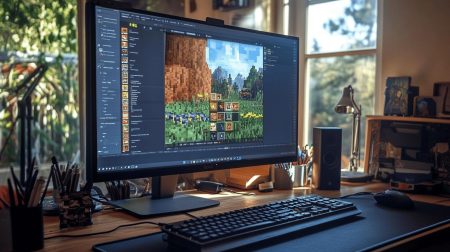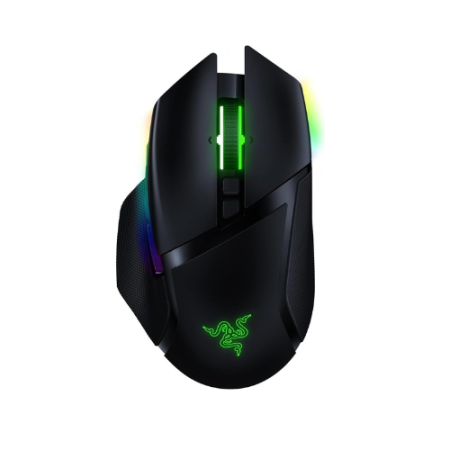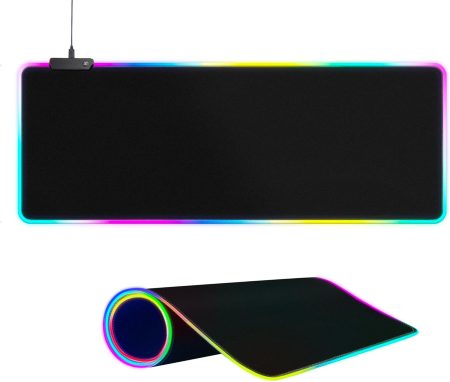Upgrading your motherboard is a big decision. It is the basis of your integrated structure, and replacing it would be costly. But it might be time to upgrade your motherboard if you’re feeling sluggish performance from your current machine or you’re looking to add more features.
Here, we’ll discuss the best time to upgrade your motherboard and the key indicators of when it might be time to make the switch.
So, if you’re thinking of upgrading your motherboard, read on to find out more.
When Is the Right Time to Upgrade Your Motherboard?
1. When Purchasing a New Processor
If you plan to upgrade your processor, you’ll also need to purchase a new motherboard. However, many motherboard manufacturers now offer a processor compatibility list. If you check one of these before purchasing, you’ll know whether or not your new processor will fit your motherboard.
If you’re unsure whether your new processor will fit your motherboard, you can try removing your current processor and installing a new one. Additionally, you’ll need to get a new motherboard if the new processor doesn’t function.
If upgrading your processor and motherboard simultaneously, consider whether you can reuse your current RAM. If you can, you’ll likely save money by upgrading your motherboard simultaneously with your processor.
2. When You Require a Stronger Motherboard Chipset
If you’re planning on adding extra components to your systems, such as extra RAM or a graphics card, you’ll need a more robust motherboard chipset. You can check your chipset’s bandwidth or look at your processor’s datasheet to find out what kind of motherboard you need.
Suppose you’re adding additional RAM. In that case, you may only need to upgrade the motherboard if your system struggles to accommodate the extra RAM. For this reason, check to see if your system can accommodate additional RAM.

3. When You Want to Overclock
You’ll also require a more robust motherboard chipset if you intend to overclock your processor. However, you’ll also want a motherboard that comes with overclocking features. This is because overclocking can put extra strain on your system.
Moreover, overclocking can make your system run hotter. Some motherboards have special features to help reduce this strain, such as heat pipes and overclocking software. If you’re planning on overclocking, you’ll need to find a motherboard that supports these features.
4. When You Have a Partly Defective Motherboard
If a part of the motherboard is defective, you won’t be able to repair it. Instead, you’ll need to replace the part with a new one. If you’re experiencing issues with your system and you suspect it’s a defective part, you can try replacing it with a new one to see if it fixes the problem.
If the replacement component functions as expected, the motherboard cannot be the root of the problems. However, if the new part doesn’t work, then the part you replaced was working fine, and the motherboard is faulty. If this is the case, you’ll need to replace your motherboard.
5. When You Need Additional Slots and Ports
If you’re planning on adding additional components to your system, such as different graphics cards, you’ll need extra motherboard slots and ports. Otherwise, you’ll find that you can only fit some things into your system.
Before upgrading your motherboard, you should check to see if your system can accommodate additional components in the first place. If your system can’t handle other features, you’ll need a more powerful motherboard to accommodate them.
6. When the Board Is Dead
If you try to power up your PC, but there’s no response, your motherboard may be dead. You can test your motherboard by removing your other components and connecting just your motherboard to see if it powers up. If it doesn’t, then your motherboard may be dead. If this is the case, then it’s unlikely that you can repair it. Instead, you’ll need a new motherboard.
How to Pick the Best Motherboard for Your Needs

• Form Factor
Motherboards come in various form factors, each designed for different computer cases. If you pick out a motherboard that’s incompatible with your case, it defeats the purpose of a new board.
So, the very first thing you need to do is verify the form factor of your computer. You may do this by determining your computer’s length and width. You’re good to go if they’re ATX, Micro ATX, Mini ITX, or E-ATX. ATX.
ATX is the most common form factor for computer cases, and it’s designed to support full-size components. If you want to install a motherboard with an ATX form factor, you’ll need a computer case designed for full-size components.
Micro ATX motherboards are designed to fit into smaller computer cases. They’re smaller than ATX motherboards but feature the same number of ports and slots.
Mini ITX motherboards are the most compact form factor, making them great for compact PC cases. However, they usually need more ports and slots found on larger motherboards.
• Chipset
The chipset is the motherboard’s CPU and dictates your computer’s overall performance. Make sure the new motherboard has the same chipset as your old one if you intend to replace it in the future.
While you can usually find the chipset of your motherboard written on the box, it’s always a good idea to do a quick internet search to be sure.
Intel has a few different chipsets, but its best chipset is the Z-series. Intel Z-series chipsets are designed for cost-effective performance, making them great for budget builds.
AMD’s top-of-the-line chipset is the X-series, and they also have several budget-friendly options.
• RAM
The type of RAM you want to use on your motherboard comes down to two things: the speed of the RAM and the motherboard’s RAM slots. The speed of your RAM refers to how quickly it can send and receive data. However, overall, motherboard performance depends on how many RAM slots it has.
If you want to install more RAM in the future, you’ll want to ensure your motherboard has enough slots to support an upgrade.
DDR4 is the latest version of DRAM and is the go-to choice for modern motherboards. While DDR4 is the preferred option for most modern builds, you can still find DDR3 in use today.
• I/O Ports
The I/O ports on your motherboard are the connection points for all your external devices. Motherboards typically have between two and six I/O ports. While most motherboards have USB 3.0, Thunderbolt 3, and USB Type-C, they differ in available ports.
So, if you have a device requiring a special port, you’ll first want to check your motherboard’s I/O ports for compatibility.
USB 3.0 ports are the standard for connecting devices like flash drives, mice, and keyboards. USB Type-C is a newer version of USB that’s growing in popularity. However, the selection of devices that support it is still limited.
Frequently Asked Questions (FAQs)
1. How often should my motherboard be upgraded?
The frequency of upgrading your motherboard depends on your individual needs. Generally speaking, upgrading your motherboard every 5-7 years is a good idea, or whenever you need to upgrade to a new processor or other hardware components.
If you are a severe gamer or power user, you may need to upgrade more often than that. On the other hand, if you are using your computer mainly for web browsing and word processing, you may only need to upgrade sometimes.
2. Do motherboards get outdated?
Yes, motherboards can become outdated over time. As technology advances and new hardware is released, motherboards may no longer be compatible with the latest components or unable to support the latest features.
Additionally, as companies stop producing specific motherboard models, parts for those boards may become unavailable, making them difficult or impossible to repair. For these reasons, staying up to date with the latest technologies and hardware is vital to ensure that your motherboard does not become outdated.
3. Is a motherboard upgrade worthwhile?
The performance of your computer can be greatly enhanced and additional functions can be accessed by upgrading the motherboard, but whether doing so is worthwhile ultimately relies on your personal demands.
If you’re looking for more robust components or essential compatibility upgrades, then upgrading your motherboard could be a great option. On the other hand, it may not be as necessary if you’re looking to upgrade your computer’s overall speed and power.
4. Does replacing a motherboard erase all data?
Replacing a motherboard may or may not erase all data stored on the computer, depending on the method used to replace the motherboard. If the original motherboard is removed and replaced with a new one without formatting the hard drive, the data will likely remain intact.
However, if the hard drive is reformatted as part of the motherboard replacement process, then all data stored on the hard drive will be erased
5. Should I reinstall Windows after changing the motherboard?
In most cases, yes. When replacing a motherboard, you will need to reinstall Windows as the new motherboard will have different drivers and settings that the existing installation of Windows may not be able to recognize.
Furthermore, if your motherboard is a different make or model than the original one, it may not be able to run the same version of Windows. In this case, you will need to install a new version of Windows.
6. Can a GPU fry a motherboard?
In general, a GPU (graphics processing unit) will not fry a motherboard. However, it is possible for a GPU to cause damage to a motherboard if it is installed improperly or if the components are not compatible.
For example, if the GPU is too powerful for the motherboard or if it does not have the correct type of power supply, then it can overload the circuit and potentially cause damage.
Conclusion
Knowing when to upgrade your motherboard can be tricky, but by following these expert tips, you can find the best time to do it. So, if you’re considering upgrading your motherboard, keep these tips in mind for the best results.














